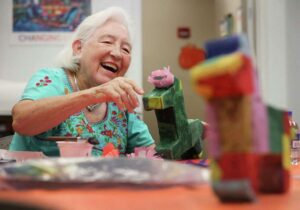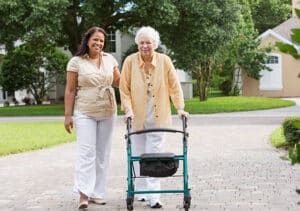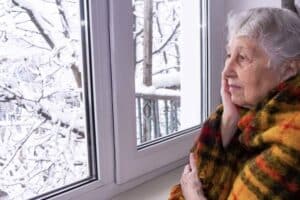
As San Antonio evolves, so too must our commitment to addressing the diverse and evolving needs of its senior population. The well-being of older adults is a multifaceted endeavor, encompassing healthcare access, social engagement, financial stability, and community support.
This comprehensive approach is essential to ensure that seniors can age with dignity and purpose navigating the challenges and opportunities that come with aging. In this article, we’ll discuss the strategies, programs, and initiatives that aim to meet the unique needs of San Antonio’s senior residents.
Access to Quality Healthcare
Ensuring robust healthcare access for seniors in San Antonio is a critical endeavor. It encompasses the evaluation of available services and their tailored approach to age-related health concerns.
The city boasts an array of healthcare services that address age-related concerns, ranging from senior clinics to specialized geriatric care. Healthcare professionals in the city play a pivotal role in providing personalized and comprehensive medical support.
An initiative from The University of Texas Health Science Center underscores the commitment to improving healthcare access for older adults. Amidst the challenges posed by the COVID-19 pandemic, the geriatrics team implemented a program integrating community health workers into patient outreach.
News Medical notes that this innovative approach doubled the annual visits to homebound seniors with various health issues, including type 2 diabetes and dementia. The outcomes were remarkable, with a 17% reduction in inpatient hospital admissions and an 11% decline in emergency room visits among the homebound elderly.
Support for Family Caregivers
In a city where many seniors rely on the dedicated care of family and friends, the importance of supporting family caregivers cannot be overstated. Recognizing the challenges that caregivers often face, the city has implemented a range of support services.
These services encompass crucial elements such as respite care, counseling, and comprehensive training to enhance caregiving skills.
Alongside family caregivers, there exists a network of professional in-home caregivers in San Antonio. These caregivers play a vital role in ensuring that seniors receive the required assistance while providing families some much-needed relief.
Always Best Care Senior Services highlights that in-home caregivers deliver assistance within the familiar surroundings of the individual’s home. This preserves a sense of comfort, security, and independence, positively impacting emotional well-being.
Furthermore, caregivers have the flexibility to tailor their services to the specific needs of the individual. This personalized approach ensures that the care provided aligns with the individual’s preferences, routines, and requirements.
Social and Recreational Opportunities
In San Antonio, a vibrant array of recreational opportunities is tailored to meet the diverse interests of the senior population. The city boasts clubs, community centers, and recreational activities designed specifically for seniors, providing spaces for connection and shared experiences.
The Go Arts Program, highlighted by KSAT, exemplifies the transformative power of such opportunities. This art program offered a platform for self-expression and creativity and became a source of healing for active older adults.
Participants like Raquel Centeno attest to the program’s impact. He cites the positive influence of art on emotional well-being and the formation of meaningful friendships. As more than 300 older adults actively engage in such programs, it becomes evident that these initiatives go beyond leisure.
They become vital avenues for combating isolation, fostering camaraderie, and contributing to the holistic well-being of the senior community.
Financial Assistance Programs for Seniors
Recognizing the economic challenges that seniors may encounter, the city provides access to various financial assistance programs. These initiatives aim to alleviate economic burdens and enhance the financial well-being of the senior population.
Comprehensive information is available on property tax exemptions, offering seniors relief from a significant financial obligation. Additionally, utility assistance programs contribute to maintaining essential services, ensuring seniors can meet their basic needs without undue financial strain.
San Antonio endeavors to empower seniors with the knowledge and resources needed to navigate economic challenges. It works to build a community where older adults can age with financial stability and peace of mind.
Nutrition and Wellness Programs
In San Antonio, a commitment to the well-being of seniors is evident through a range of nutrition and wellness programs. Local initiatives in the city go beyond providing meals. They emphasize holistic wellness, offering a spectrum of services that cater to the unique needs of seniors.
The CHEF Culinary Health Education Program, in collaboration with the San Antonio Food Bank, extends its reach to tens of thousands of families. This initiative not only focuses on nutritional support but integrates cooking classes and health education workshops. It is a testament to the city’s dedication to future generations, encompassing not only children but also the elderly and families facing diverse challenges.
Through partnerships like these, the city’s community is creating a comprehensive ecosystem where seniors can access nourishing meals. This will also provide them with educational resources promoting long-term health and well-being.
Volunteer and Engagement Opportunities
The city actively encourages seniors to participate in volunteer and engagement opportunities, recognizing the profound impact of their experience and wisdom on the community.
Various volunteer programs cater specifically to seniors, providing avenues for them to contribute meaningfully to local initiatives.
Additionally, the city promotes intergenerational initiatives, creating bridges that connect seniors with younger generations. These initiatives facilitate the exchange of valuable insights and contribute to building a more cohesive and interconnected community.
Conclusion
San Antonio stands as a city committed to enhancing the lives of its senior population through a multifaceted approach. The collaborative efforts between professionals, community organizations, and volunteers underscore a collective commitment to creating an age-friendly environment.
As the city evolves, these efforts contribute to building a community where seniors are supported and actively engaged. This will ensure that they can age with dignity, purpose, and a sense of belonging.
Through these initiatives, the city sets a commendable example for other communities. It illustrates how thoughtful and inclusive practices can create a vibrant and supportive environment for seniors to thrive.








